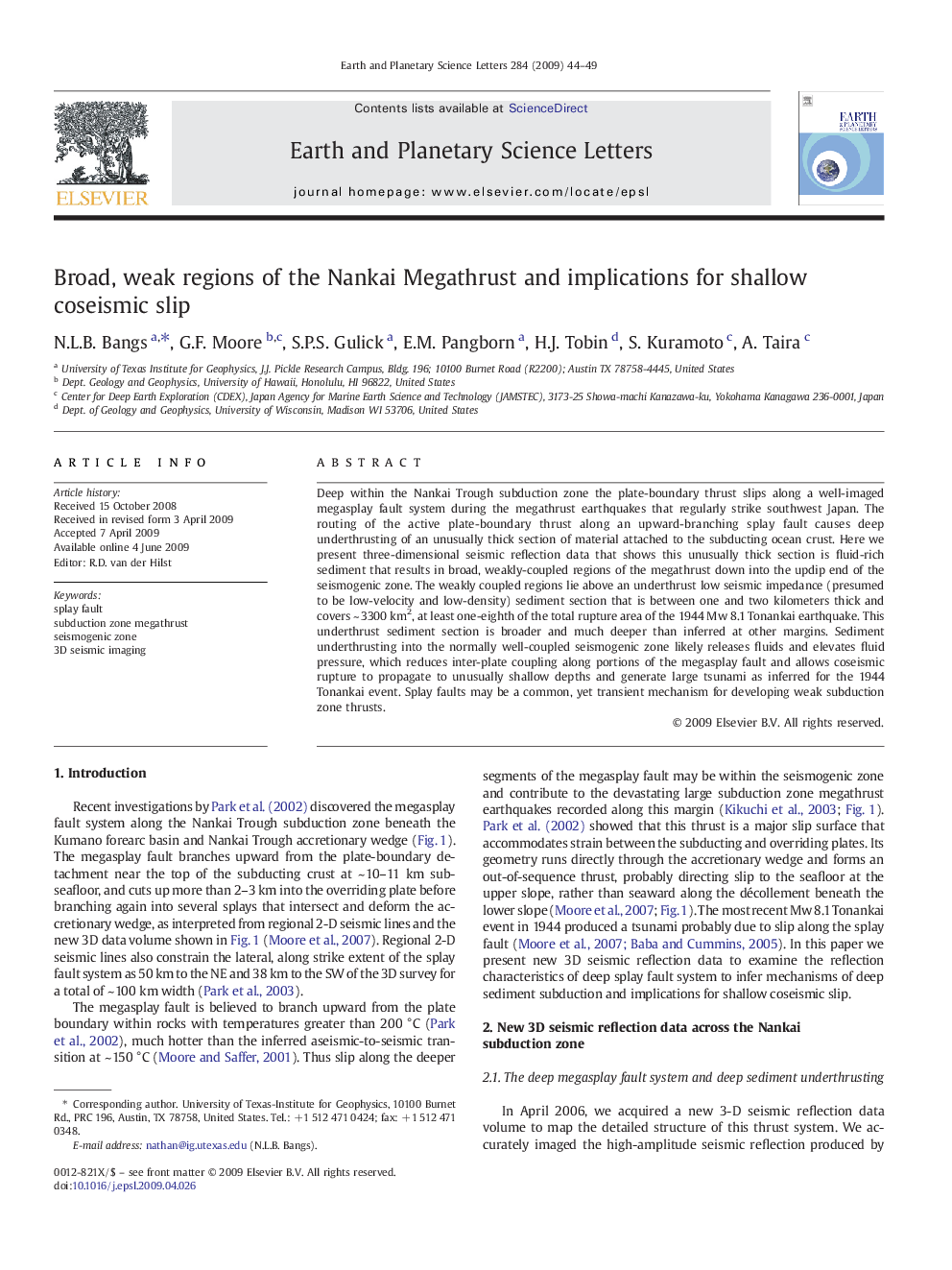| کد مقاله | کد نشریه | سال انتشار | مقاله انگلیسی | نسخه تمام متن |
|---|---|---|---|---|
| 4679195 | 1634871 | 2009 | 6 صفحه PDF | دانلود رایگان |

Deep within the Nankai Trough subduction zone the plate-boundary thrust slips along a well-imaged megasplay fault system during the megathrust earthquakes that regularly strike southwest Japan. The routing of the active plate-boundary thrust along an upward-branching splay fault causes deep underthrusting of an unusually thick section of material attached to the subducting ocean crust. Here we present three-dimensional seismic reflection data that shows this unusually thick section is fluid-rich sediment that results in broad, weakly-coupled regions of the megathrust down into the updip end of the seismogenic zone. The weakly coupled regions lie above an underthrust low seismic impedance (presumed to be low-velocity and low-density) sediment section that is between one and two kilometers thick and covers ~ 3300 km2, at least one-eighth of the total rupture area of the 1944 Mw 8.1 Tonankai earthquake. This underthrust sediment section is broader and much deeper than inferred at other margins. Sediment underthrusting into the normally well-coupled seismogenic zone likely releases fluids and elevates fluid pressure, which reduces inter-plate coupling along portions of the megasplay fault and allows coseismic rupture to propagate to unusually shallow depths and generate large tsunami as inferred for the 1944 Tonankai event. Splay faults may be a common, yet transient mechanism for developing weak subduction zone thrusts.
Journal: Earth and Planetary Science Letters - Volume 284, Issues 1–2, 30 June 2009, Pages 44–49